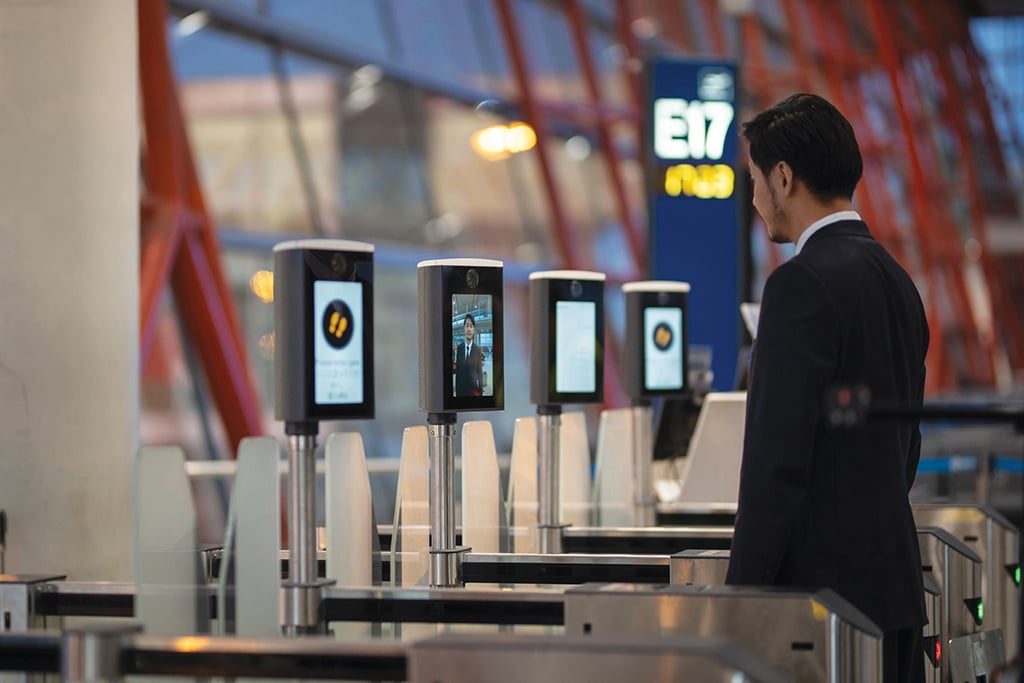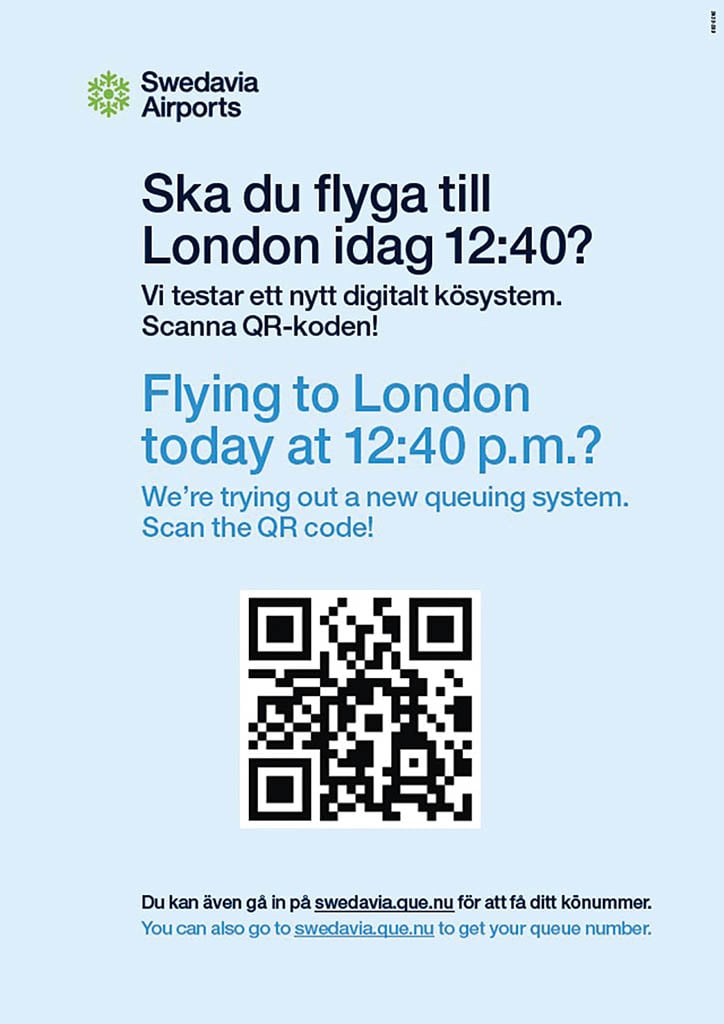
Delta Air Lines is piloting a digital ID facial matching system to enable passengers to pass through an airport without showing a physical document.
While governments in some regions, notably Europe, are seeking to constrain growth or even reduce capacity at their major gateways, airport authorities elsewhere have their sights set on being bigger, better, more connected and with more of the technology that passengers expect and want.
That should be a red flag to those countries that are moving to cut flights at their international hubs. Politically motivated caps won’t reduce demand for air travel—now on a massive surge—so flights, passengers, trade and revenue will flow to where it can be accommodated and welcomed.
This report highlights some of those shifting dynamics.
The recovery of air travel has been good news for the industry but has also highlighted problems that vexed travelers even before the pandemic. Long lines and delays at airports are back, often compounded by post-pandemic staffing shortages.
But by leveraging smart IT, airlines and airports are finding they can cut the time and inconveniences associated with air travel.
And customers expect much less inconvenience. A survey by Fast Future Publishing found 70% of air travelers want invisible no-stop border controls, 65% want touchless curb-to-cabin biometric checks and 60% want digital passports, with data deleted after use.
The industry is clearly moving in that direction.

SITA, the air transport IT provider, has a long-term vision that depicts travelers with electronic IDs on personal devices sufficient to clear all check-in, bag check, departure, security, health and border checkpoints—all with touchless, paperless facial recognition. In this vision, IDs and equipment from different providers could work together, as long as a common service enables them to communicate with each other. SITA would like to be that common service.
That big picture is still away off. But airlines and airports are recovering from the COVID cash crunch and investing more in IT. Masks have come off, making facial recognition more feasible. Lots of little pieces are falling into place that make SITA’s vision, or something very much like it, more plausible.
NORTH AMERICA
In North America, Delta Air Lines is piloting a digital ID system to enable passengers to pass through Atlanta Hartsfield-Jackson International Airport and Detroit Metro Airport without showing a physical document. In partnership with the US Transportation Security Administration (TSA), this digital ID uses facial matching at bag drop, security and departure.
ID users must be members of Delta’s frequent flyer program and TSA’s PreCheck and have passports and a known traveler number stored in their Delta profiles. Delta’s digital ID is the passenger’s passport photo, retained by the government, that PreCheck members have agreed to let the airline and TSA use for face matching at bag drop and security.
This program will expand to international flights from Atlanta Hartfield and to New York LaGuardia, Los Angeles LAX and New York JFK. The airline says bag drop time has been cut 75% by digital ID, and the majority of eligible passengers use the new technology. TSA identity management capabilities manager Jason Lim says the program also increases security by using government photos, and it can cut ID check time dramatically when lines are full. Lim is working with other US airlines to expand the program.
US Customs and Border Protection (CBP) already uses passengers’ digitized passport photos to operate its Simplified Arrival Program. Under Simplified Arrival, now used for entry at all US international airports and for exit at 36 airports, a photo is taken instead of a passport being inspected. This photo is compared to an existing passport or visa photo. By summer 2023, CBP had processed 200 million passengers using this biometrical facial comparison.
Other carriers are also pushing forward. American Airlines’ express bag-tagging kiosks at Dallas-Fort Worth and soon other airports scan boarding passes and print tags in seconds. And American’s mobile ID QR code can be used at TSA PreCheck stations and Admiral lounges. United Airlines’ Bag Drop Shortcut locations now let passengers check bags in a minute or less at 38 airports. In 2024, Alaska Airlines will automate bag drop with biometrics, seeking to hold drop-and-tag time to 45 seconds.
LATIN AMERICA
Latin America needs much more of this sort of IT innovation at airports, says Rafael Echevarne, director general at ACI-Latin America & Caribbean. But governments often oppose innovation, partly fearing job losses.
For example, governments worry that facial recognition will reduce the need for immigration officers. But Echevarne insists the technique only replaces routine passport stamping, freeing officers for more important duties.
Echevarne also wants airlines to automatically share passenger data with security services, rather than forcing passengers to redundantly fill out paper or online forms. And he wants more automatic ticket readers to replace staff protecting secure areas of airports.
One major exception to Latin American wariness of technology is Montevideo’s Carrasco International Airport, according to Diego Arrosa, CEO at Aeropuertos Uruguay. In 2016 Carrasco became the first Latin American airport to install biometric border eGates for arrivals and by 2018 it offered a digital passenger journey with its Easy Airport solution.
Carrasco’s eGates use facial recognition, comparing the travel document photo on a biometric chip with the photo taken at the gate.
Easy Airport consists of 12 self-service check-in kiosks, with more scheduled for 2024. Digital bag drops are also scheduled for 2024, when eGates for security checks should be at all departure gates. Arrosa says Easy Airport also monitors queueing, cutting border clearance from 30 minutes to as short as 15 seconds.
Another innovator is Queen Beatrix International Airport in the Caribbean island of Aruba, which is working with tech providers Indicio and SITA to enable travelers to meet entry requirements before boarding with a verified digital credential. The technology lets travelers create their digital travel credentials in their mobile wallets from physical passports and then share these digital credentials with multiple points on their journey, both at airports and travel destinations.

EUROPE
Almost all European airports are increasing their IT investments to ease the passenger journey, accelerating a trend in place before COVID, according to ACI-Europe. Passengers need more touchless technology and processing of smartphone data, a spokesperson says.
Europe’s airports are therefore investing in self-service check-in, bag drop, border control and boarding, and contactless solutions at all touchpoints, including single biometric tokens.
Swedavia, which operates 10 of Sweden’s busiest airports, will begin testing biometric checks at the end of 2023 and early 2024. Swedavia has already tested digital queuing at Göteborg Landvetter, with passengers notified on smartphones when their turn at check-in is approaching. This system will be trialed at nine more Swedish airports.
The Swedes recently launched a digital wheelchair tracker to help reduced-mobility passengers at Stockholm Arlanda and Göteborg. And they are upgrading and easing security facilities and will speed up kiosk printing of bag tags.

Lufthansa is involved in several working groups developing digital IDs on personal devices combined with facial recognition for all airport touchpoints, says VP for digital delivery Oliver Schmitt. At Frankfurt, Munich International, Hamburg and Vienna International the carrier already offers frequent flyers facial recognition at dedicated gates, in partnership with Star Alliance Biometrics, which is interoperable with SITA’s Smart Path.
Smart Path is a low-touch solution that, with installed gates, can enable enrolled passengers to replace paper boarding passes and passports with facial recognition at check-in, bag drop, security, border control and departure.
For example, at Beijing Capital International, Smart Path is working at over 600 biometric checkpoints, including 250 automatic gates and 80 kiosks. Passengers enroll their faces at check-in, then facial recognition is used at bag drop, immigration, security and boarding international flights. The technology enables the airport to board over 400 passengers on an Airbus A380 in less than 20 minutes. It also supports hands-free and touchless duty-free payments.
Beyond Beijing, Smart Path has been deployed at Muscat, Istanbul, Orlando, Miami, San Francisco and Athens.
ASIA-PACIFIC
In Asia-Pacific, Auckland and Kuala Lumpur airports have installed biometric-enabled automated and self-service touchpoints. India’s Bengaluru, Tokyo’s Narita and Haneda, and Qatar’s Hamad have adopted facial recognition to facilitate faster travel.
Other Asia-Pacific airports are also adopting IT solutions to ease the passenger journey. Hong Kong International has adopted virtual assistants and chatbots to reduce wait times.
Shanghai Pudong is using AI-powered security cameras to improve security and reduce wait times. Indira Gandhi International is moving toward facial recognition. In South Korea, Incheon is using robotics and AI-driven handling to improve baggage efficiency and reduce bag mishandling.
But the essential long-run goal remains enabling passengers to confirm their identities and provide all information necessary for health, security and border checks digitally, before they ever set foot in an airport, and then have only their faces checked at various airport touch points. And this seamless process should work across the air transport system, at small airports as well as mega-hubs.
If and when that happens, the result would leave only the physical security check of passengers and carry-ons to slow travel and aggravate travelers. And much more can be done. For example, Amsterdam Schiphol was the first airport in the world to equip all security lines with CT scanners, so passengers need not remove liquids and electronics from bags. Dublin Airport Authority is seeking to make the average check-in process just 15 minutes long, certainly a reasonable goal.
But achieving—or better, beating—that goal, requires more than technology or innovations by airports and airlines. It will also require investment in infrastructure and new equipment, as well as smart personnel management by government security agencies.





